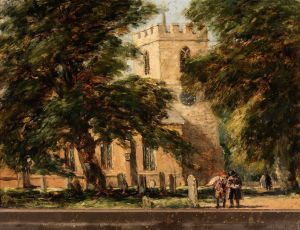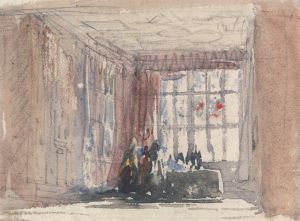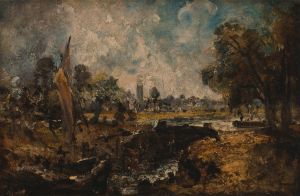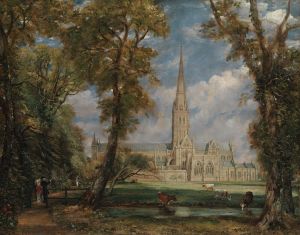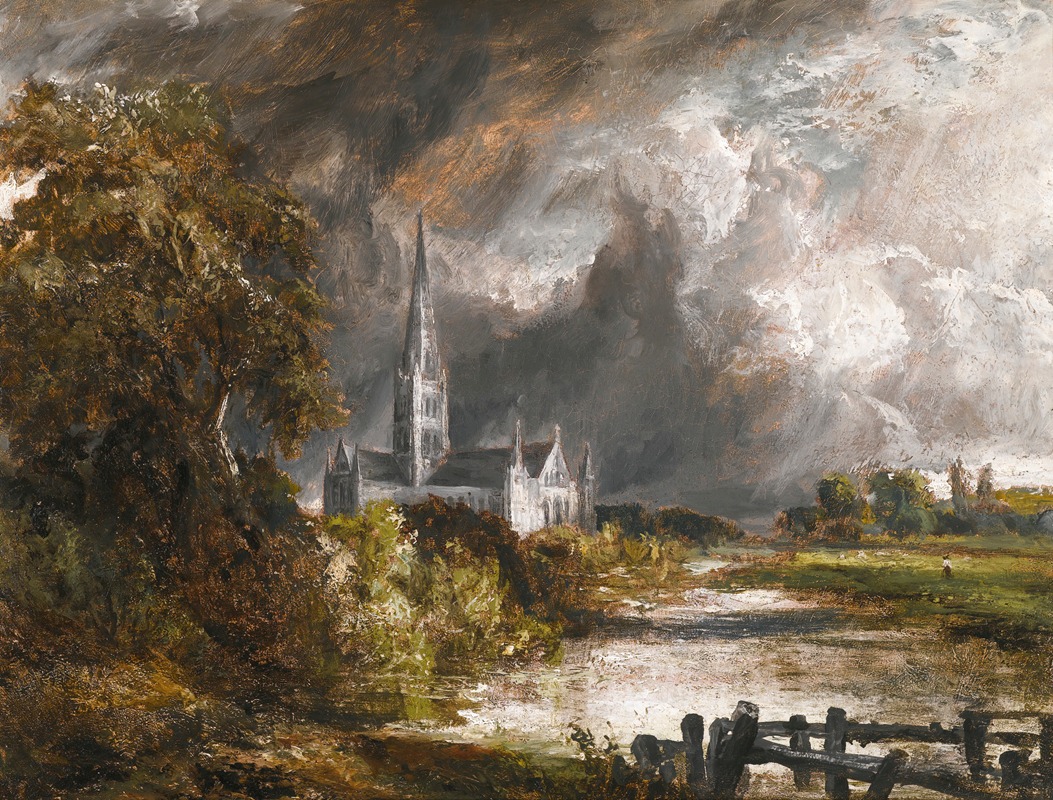
Salisbury Cathedral From The Meadows
A hand-painted replica of John Constable’s masterpiece Salisbury Cathedral From The Meadows, meticulously crafted by professional artists to capture the true essence of the original. Each piece is created with museum-quality canvas and rare mineral pigments, carefully painted by experienced artists with delicate brushstrokes and rich, layered colors to perfectly recreate the texture of the original artwork. Unlike machine-printed reproductions, this hand-painted version brings the painting to life, infused with the artist’s emotions and skill in every stroke. Whether for personal collection or home decoration, it instantly elevates the artistic atmosphere of any space.
"Salisbury Cathedral from the Meadows" is a painting by the renowned English Romantic painter John Constable. Completed in 1831, this work is one of Constable's most celebrated pieces and is notable for its dramatic portrayal of the Salisbury Cathedral in Wiltshire, England.
John Constable (1776-1837) is best known for his landscape paintings that capture the natural beauty of the English countryside. His works are characterized by their detailed and expressive representation of the sky and weather conditions, which play a significant role in the overall mood of his paintings. "Salisbury Cathedral from the Meadows" is no exception, showcasing Constable's mastery in depicting atmospheric effects.
The painting measures approximately 153.7 cm by 192 cm (60.5 inches by 75.6 inches) and is executed in oil on canvas. It presents a view of Salisbury Cathedral from across the River Nadder, with the cathedral's spire rising majestically against a turbulent sky. The composition is divided into three horizontal bands: the dark, stormy sky, the cathedral and its surroundings, and the lush green meadows in the foreground. The dramatic sky, filled with dark clouds and a hint of a rainbow, suggests a moment of impending or receding storm, adding a sense of drama and movement to the scene.
"Salisbury Cathedral from the Meadows" is not just a landscape painting but also a work imbued with personal significance for Constable. The cathedral held a special place in his heart, partly due to his friendship with John Fisher, the Bishop of Salisbury, who was a great supporter of Constable's work. The painting is also seen as an expression of Constable's deep religious faith and his appreciation for the natural world as a manifestation of divine creation.
The painting was first exhibited at the Royal Academy in 1831, where it received mixed reviews. Some critics praised its grandeur and emotional depth, while others found it overly dramatic. Despite the initial mixed reception, the painting has since been recognized as one of Constable's masterpieces and a significant work in the history of English landscape painting.
"Salisbury Cathedral from the Meadows" is part of a series of paintings and sketches that Constable created of the cathedral. These works collectively highlight his fascination with the interplay between architecture and nature, as well as his ability to capture the transient effects of light and weather.
Today, "Salisbury Cathedral from the Meadows" is housed in the collection of Tate Britain in London, where it continues to be admired by art lovers and scholars alike. The painting remains a testament to Constable's skill as a landscape artist and his ability to convey the sublime beauty of the English countryside.






